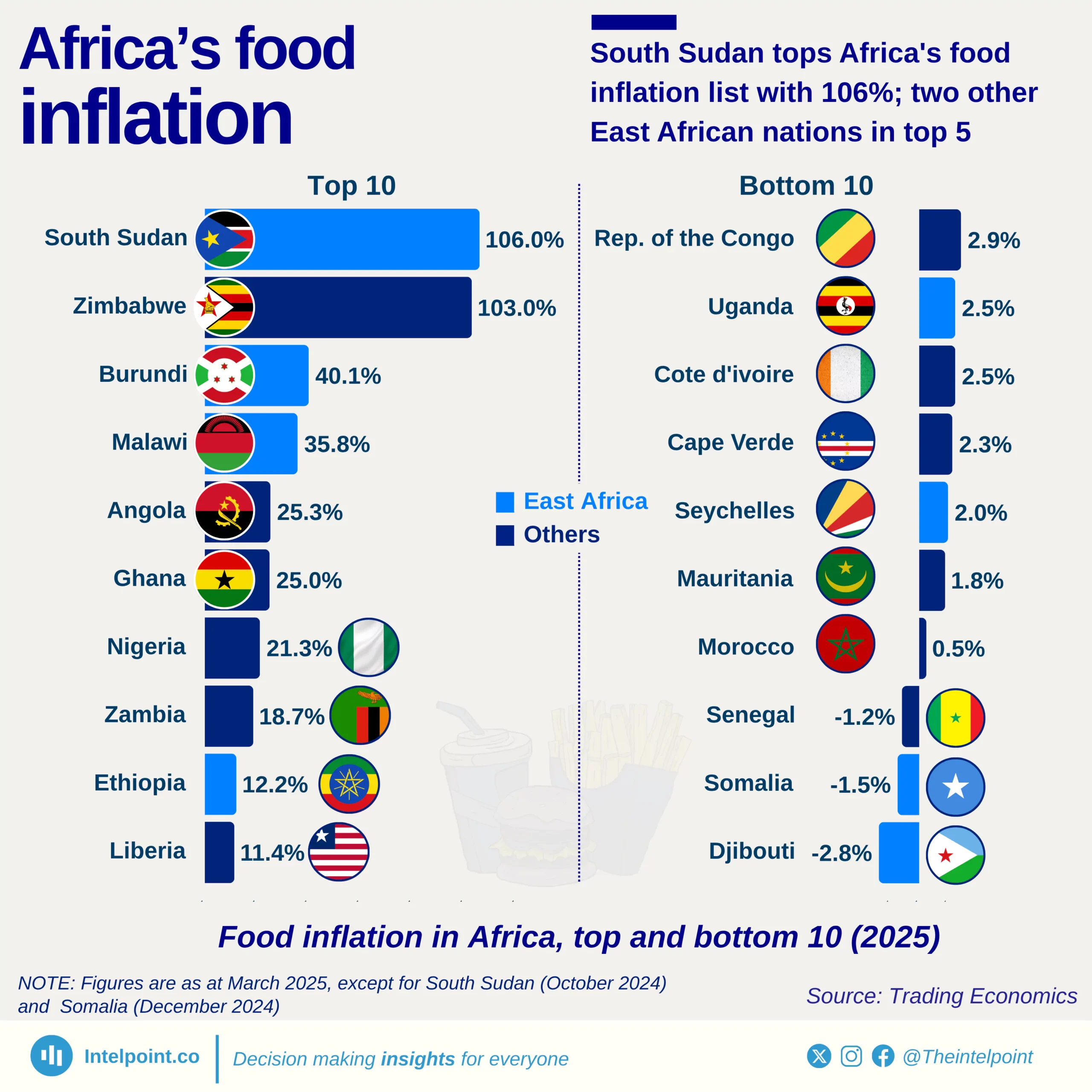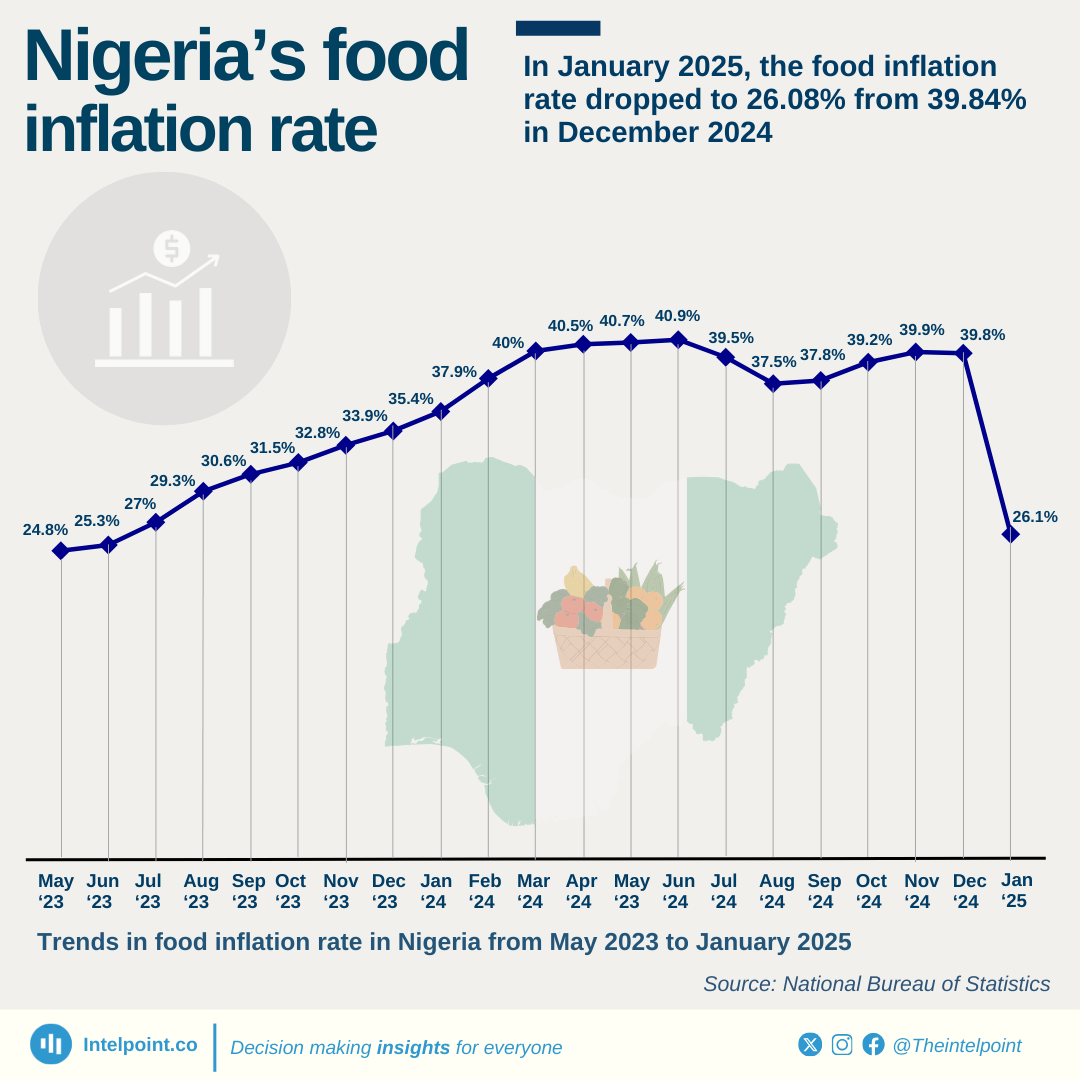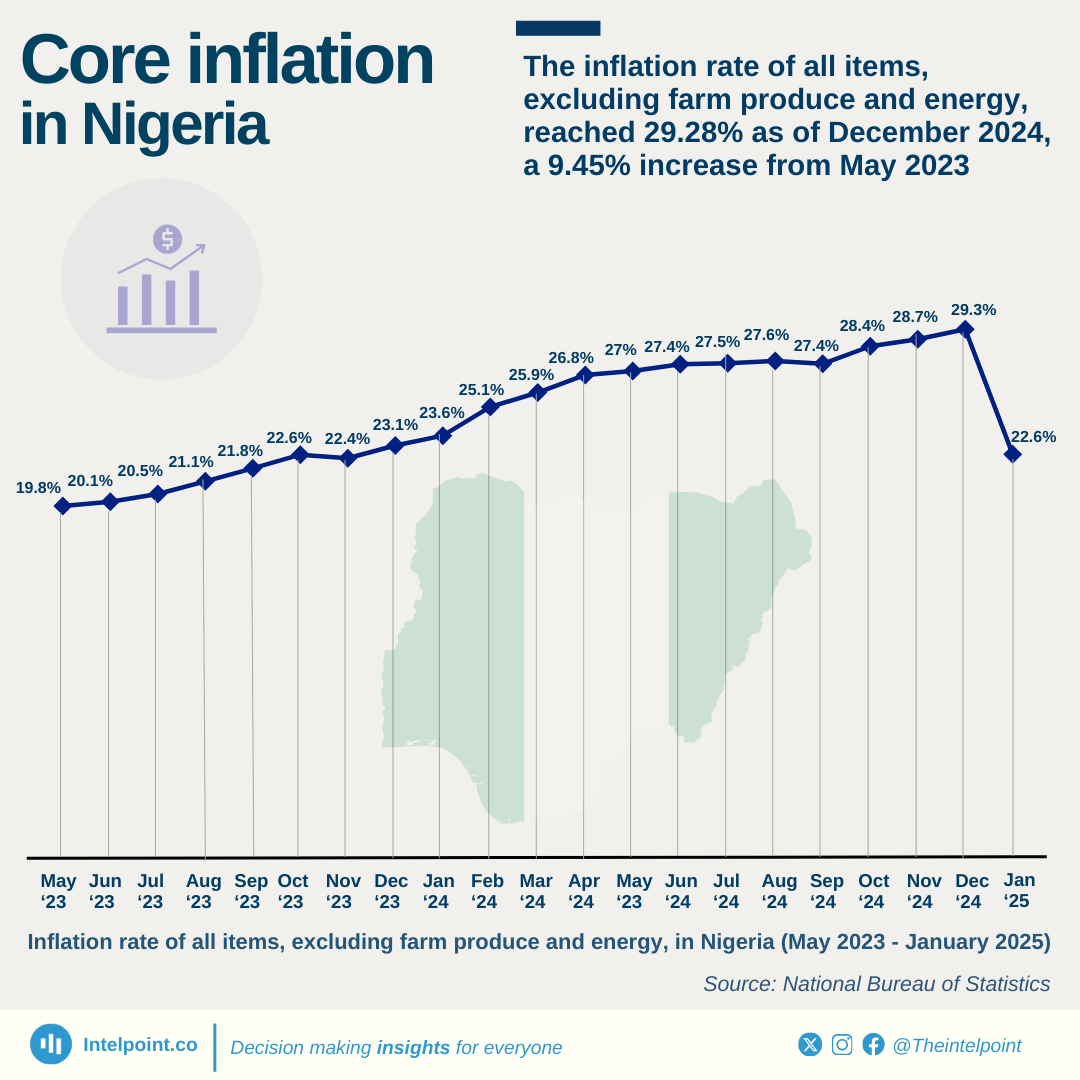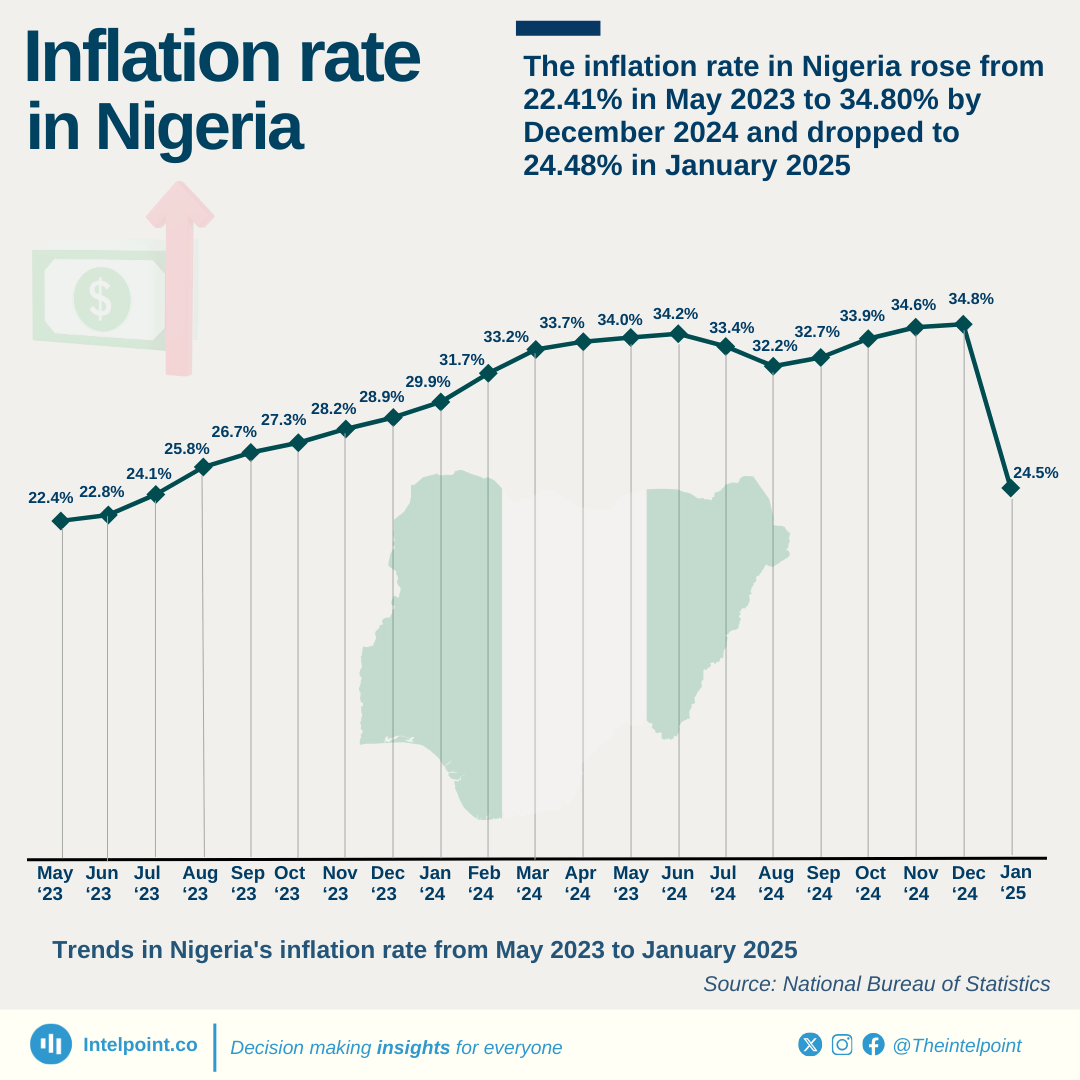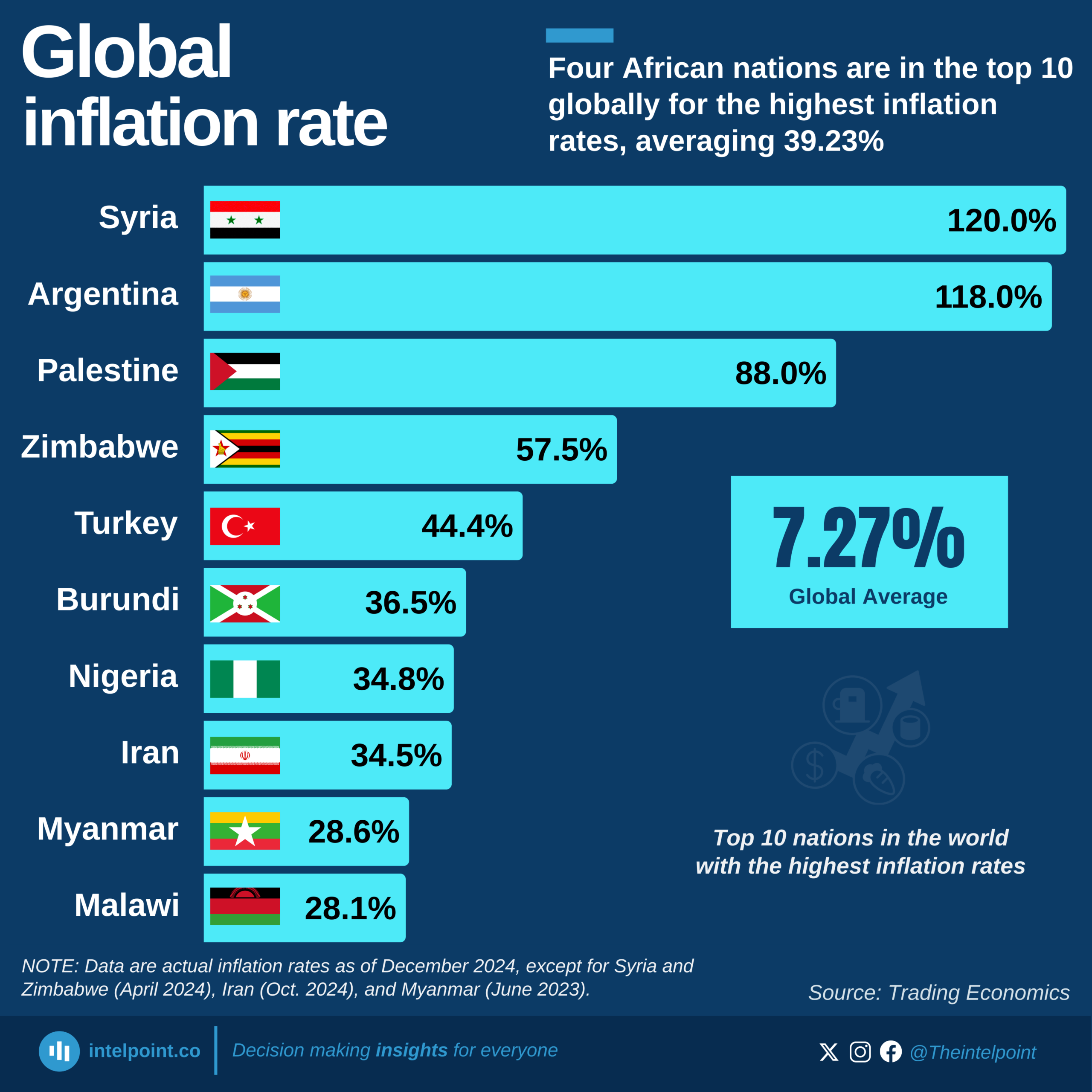This chart shows how much money you would need each month to buy the same food and non-alcoholic beverages that cost ₦100,000 in January 2025. The values are calculated using the month-on-month CPI for food, which tracks changes in prices over time.
Food prices have steadily increased in Nigeria this year. Based on the rebased Consumer Price Index (CPI) from the National Bureau of Statistics, the cost of the basket of food and non-alcoholic beverages rose about 13.9% between January and August 2025.
Using January as a baseline, this means that the amount of money that could buy a typical food basket in January increased by roughly 14% by August to purchase the same items, illustrating the erosion of household purchasing power due to inflation.
